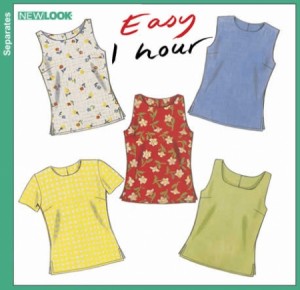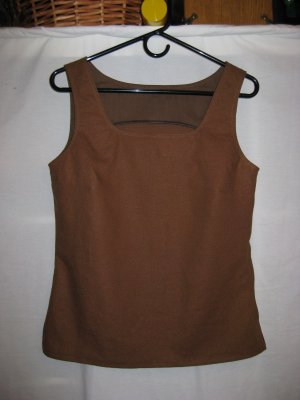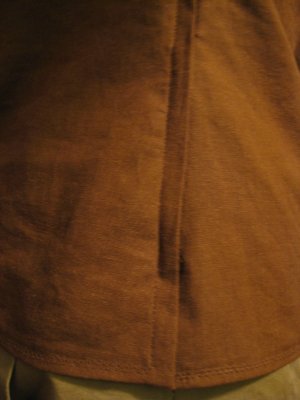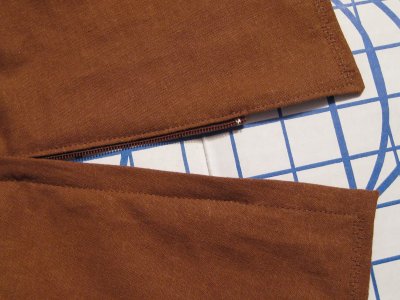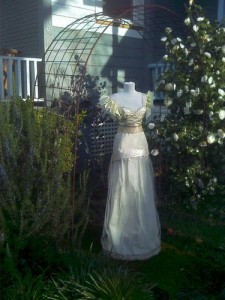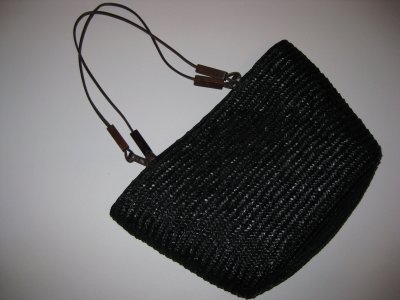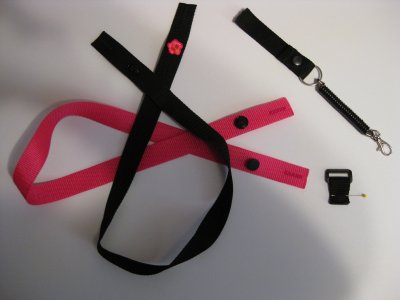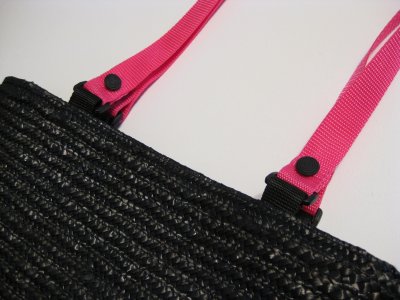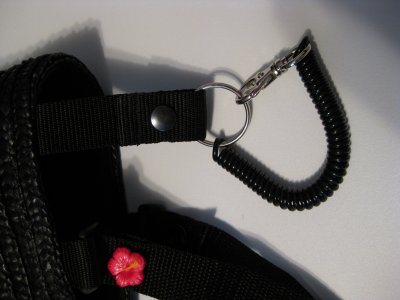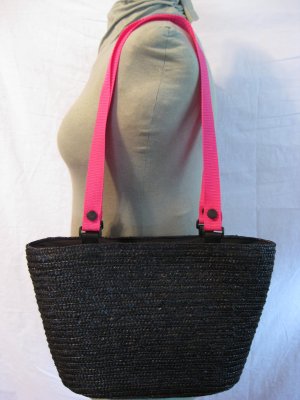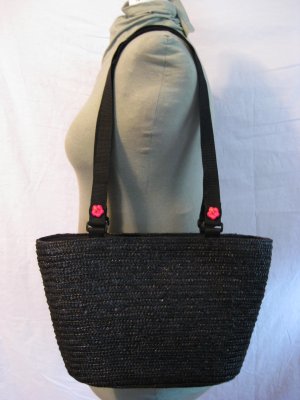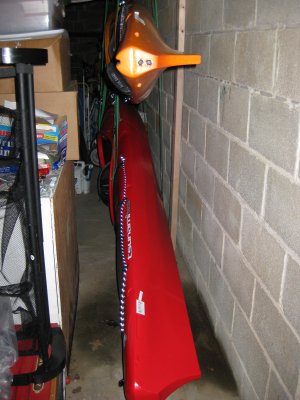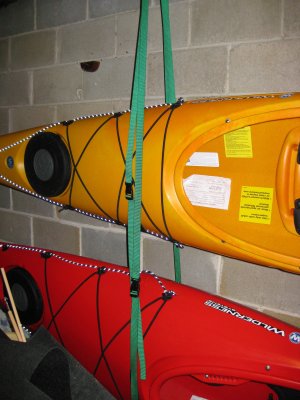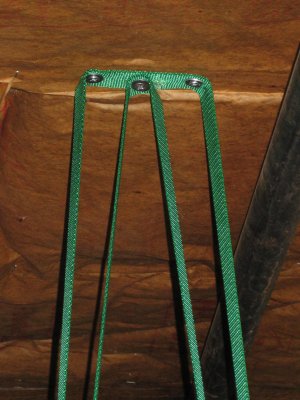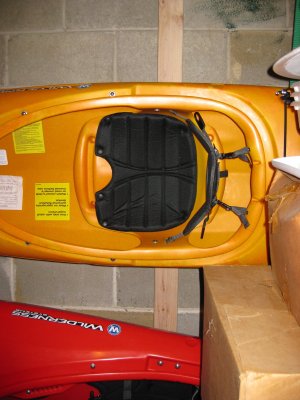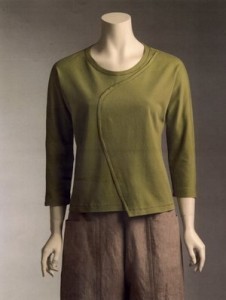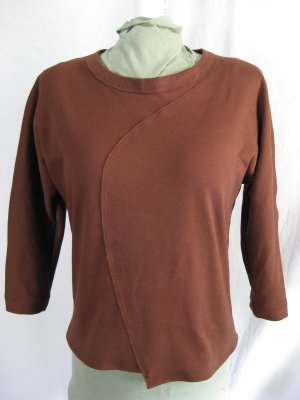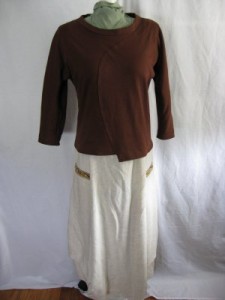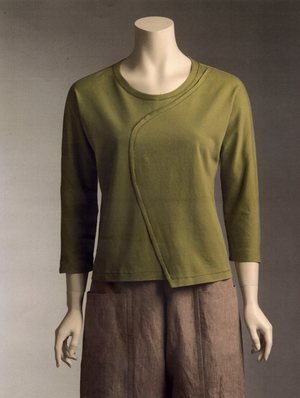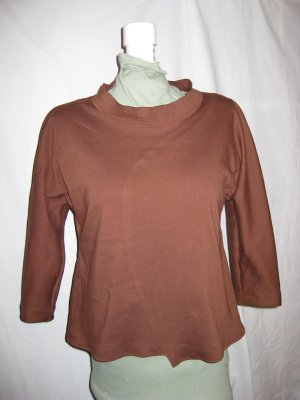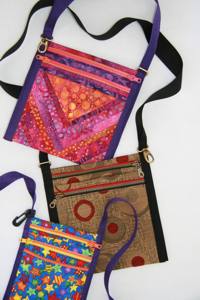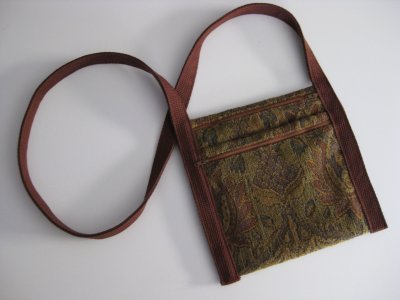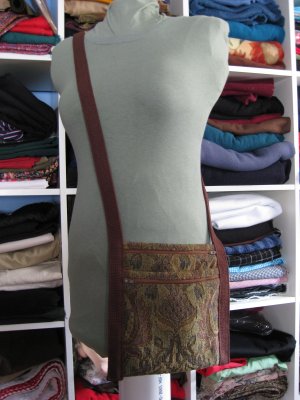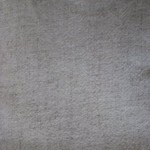 See this fabric? It’s ugly. What was I thinking? I don’t even remember when I bought it, but I must have thought it was a stupendous deal, because I bought a lot. Not only is it boring, but it’s also a little on the heavy side – perfect for a really durable tablecloth or something like that. No matter how hard I try, though, I don’t see a beige-flecked-with-brown tablecloth in my future. So this stuff got nominated for the muslin of Marcy Tilton’s new skirt pattern.
See this fabric? It’s ugly. What was I thinking? I don’t even remember when I bought it, but I must have thought it was a stupendous deal, because I bought a lot. Not only is it boring, but it’s also a little on the heavy side – perfect for a really durable tablecloth or something like that. No matter how hard I try, though, I don’t see a beige-flecked-with-brown tablecloth in my future. So this stuff got nominated for the muslin of Marcy Tilton’s new skirt pattern.
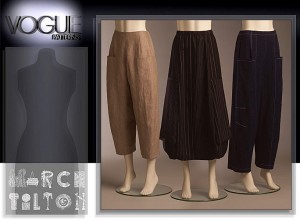
It wasn’t a great choice, but it did the trick. I’m ramping up for PR’s Mini-Wardrobe contest and wanted to make sure this skirt would work for me before the first cuts begin on May 1. I’m happy to report that it does, but here are a few notes for anyone else who’s tempted by this pattern. My fabric’s a slightly loosely-woven blend, maybe of linen and rayon. It has drape, which is nice for this skirt, but weight, which is less nice. Vogue’s fabric recommendations (stretch woven, double knits and silk dupioni) are just about right: you want a fairly light fabric, but also something with a bit of substance, so that you don’t lose that nifty shape at the hem.
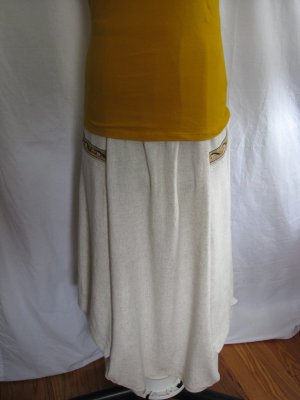
The front of the skirt is sewn in three panels: you hem each one before assembly, and attach deep pockets to each side panel before putting the front pieces together. The pockets are anchored at the top with zippers, and would-be sewists be warned: one side of the zipper tape shows, in all its bare glory, at the top of the pocket. That might not matter, depending on your fabric or color choices, but it became an issue for me. I found an interesting Mahogany Brown zipper that picked up the flecks in my fabric, and coordinated with the shirt I’m making to go with this skirt. I wasn’t sure I’d like the effect, but I figured that adding a band of color to the skirt couldn’t hurt, given the essential blandness of the fabric.
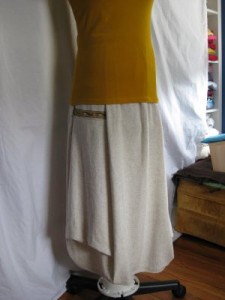
The zipper tape is an issue to keep in mind; however, there is a an actual error that everyone who uses this pattern should be aware of. The notions list on the pattern envelope calls for “three 7″ zippers”. WRONG! Even for the smallest size skirt, a seven inch zipper will not fit on the pockets: Buy two NINE inch zippers, and, for the third zipper, use whatever size you want to close the skirt. At 10 PM, it was disappointing to discover that my zippers were too short. In my stash, I found two nine-inch Ecru zippers, and quickly realized that they weren’t going to work. In place on my pockets, they looked like lingerie straps gone wrong. Wracking my poor tired brain, I remembered that I had a half yard of an embroidered ribbon tucked away, so I applied that over the exposed zipper tape before setting the pocket into the skirt. I think it was a good save, but boy, am I happy this was only a muslin.
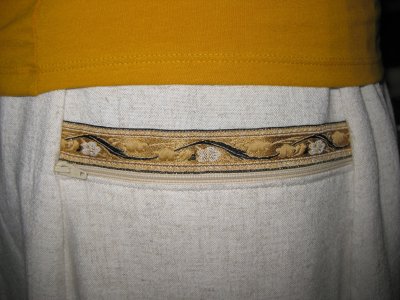
I put the zipper pulls next to the side seams; Vogue’s line drawing puts them toward the center panel. I think I’ll do that next time; they seem to add a little bulk at the sides, which might be less noticeable if relocated. The photo on the envelope is quite deceptive. If you look closely, you can see that the manikins are standing on their toes. This appears to elongate their legs, and makes the skirt look as if it’s much shorter than it is. The back skirt length is given as 34 3/4 inches, well past my ankles. I didn’t check this little detail before making the skirt, and did only my usual 2 inch alteration to shorten it. I think I’ll shorten it another two inches in the next iteration. The waist is semi-fitted with both elastic and a back zipper. I did a placket insertion, because I think they look a lot nicer. The casing for the elastic is cut in one with the skirt, but I trimmed it and used bias tape for the casing because my fabric was fairly bulky, and I wanted the waistband to be a bit sleeker.
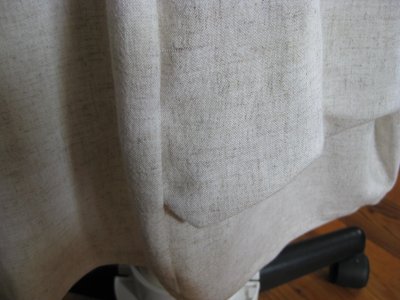
Though the design is really interesting, with curved hems, those pockets, and great lines, construction is actually very simple. The trickiest part is forming the bottom of the pockets, which requires mitering the corners, and then edge stitching the bottom edge to the skirt panel. Vogue’s directions are very clear, though, and even a novice should be able to get through this without too much difficulty. Basting the pocket sides is a must, though, since there is a tricky notch at the bottom of the pocket that must line up properly if the pockets are going to look as they should. (Ed. 4/12/08 – lower edge of pocket above.)
On my dummy, this skirt looks like a particularly unflattering apron from another age. (That’s why you’re seeing it here with a purchased t-shirt, which somehow makes the skirt look more like actual clothing.) On me, it looks much better (partly, maybe, because I’m now somewhat smaller than my dummy.) This skirt begs for a more interesting fabric, or maybe even just the causal crispness of a black stretch cotton. I can’t wait to make it again!

